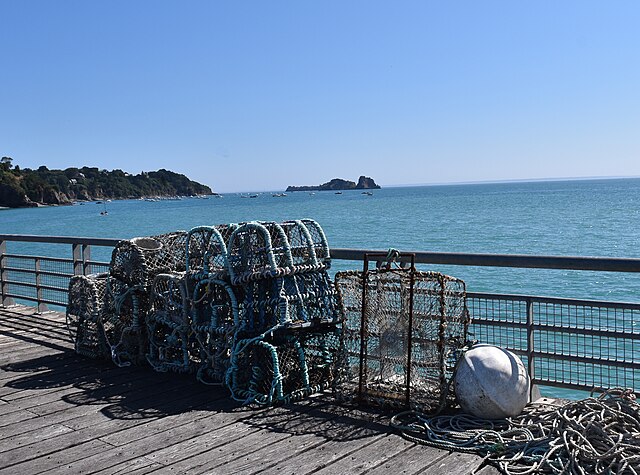Declining lobster population in New England has prompted the Atlantic States Marine Fisheries Commission (ASMFC) on October 30, 2025 to declare it overfished.
A regulatory statement by the ASMFC touted that though not depleted, the population is down by 34% since 2018.
Fisheries experiencing the most plunges include those near Massachusetts and Maine, the last being America’s top lobster state by landings.
According to the commission’s report, southern New England’s waters have also seen stock declines in the past years.
Interim rules to reassert population numbers have come up unsuccessfully due to resistance by the fishery and processing niches.
On May 5, the ASMFC passed Addendum 32, thereby conceding to not increase the minimum catch size by 1 1/16 inches.
Had the catch size regulation passed, the most popular American retail lobster category of 1 pound in size would have reduced.
Another regulation is rope-less fishing gear. The New England Fishery Management Council (NEFMC) indefinitely delayed the rule on September 25, 2025.
The regulation seeks to save right whales from entanglement because it champions lobster traps with no boat attachments.
On overfishing, the Maine Lobstermen’s Association’s executive director Patrice McCarron said that the diminishing resource still must consider family sustenance.
This was in reference to Maine’s $528-million lobster coastal economy, as of 2024, indicating economic livelihoods for families.
From 2009 through 2018, federal lobster fisheries brought up to 145 million pounds in landings, a trend that slowed starting 2019. By 2024, the United States’ lobster industry was worth around $700 million in fishmonger returns.
Despite its resistance to new rules, the industry still commits to sustainability and conservation efforts.
According to Carl Wilson at the Maine Department of Marine Resources, the department will push sustainability efforts. Wilson also believes in industry “commitment.”
Furthermore, a recent lobster survey also found a majority of respondents in Maine supporting such sustainability measures as whale traceability systems. But can the industry recover lobster stock declines in New England without sacrificing livelihoods? The stats below attempt an answer via review of the lobster fishing status in these waters.
New England Lobster Population Statistics
New England was home to the bulk of America’s annual lobster catch of above 100 million pounds annually in its best period of 2009-18. Although warming waters have in the early 2020s cut these volumes, returns are still high at $510 million (2024). Some $390 million of this value comes from Maine alone. Still, a population decline by 34% between 2018 and 2025 prompted the Atlantic States Marine Fisheries Commission (ASMFC) to declare the resource overfished.
What is the New England lobster population trend since 2016?
By 2022, the juvenile lobster stock in New England’s waters had depreciated by 39-40% from 2016-18’s.
What is the most populous New England lobster fishery by landings?
The ASMFC cites that since 1982, the Gulf of Maine has been supplying an average 82% of all federal lobster landings. Joint landings in New England’s Gulf of Maine and Georges Bank have however plummeted from 2018 highs of 145.7 million pounds to 123.6 million pounds in 2023.
